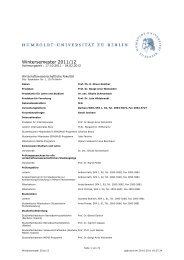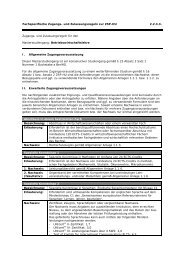Measuring the Effects of a Shock to Monetary Policy - Humboldt ...
Measuring the Effects of a Shock to Monetary Policy - Humboldt ...
Measuring the Effects of a Shock to Monetary Policy - Humboldt ...
Create successful ePaper yourself
Turn your PDF publications into a flip-book with our unique Google optimized e-Paper software.
Bayesian FAVARs with Agnostic Identification 25<br />
that p(θk | YT , θ.=k) where θ j<br />
.=k<br />
= (θj 1, . . . , θ j<br />
k−1<br />
, θj−1 k+1<br />
, . . . , θj−1<br />
d , ). The blocking can arise<br />
naturally, if <strong>the</strong> prior distribution θk are independent and each conditionally conjugate.<br />
Given an arbitrary set <strong>of</strong> starting values θ ′0 = (θ 0 1, . . . , θ 0 d) set <strong>the</strong> iteration index j <strong>to</strong> zero<br />
and repeat <strong>the</strong> following cycle J times.<br />
j = 1<br />
draw θ (j)<br />
(1) from p(θ1 | θ j−1<br />
2 , . . . , θ j−1<br />
k , YT )<br />
draw θ (j)<br />
(2) from p(θ2 | θ j<br />
1, θ j−1<br />
3 , . . . , θ j−1<br />
k , YT )<br />
.<br />
draw θ (j)<br />
(k) from p(θk | θ j<br />
1, θ j<br />
2, . . . , θ j−1<br />
k−1 , YT )<br />
j = j + 1<br />
After each cycle j is increased by one. Thus each subvec<strong>to</strong>r is updated conditional on<br />
<strong>the</strong> most recent value <strong>of</strong> θ for all o<strong>the</strong>r components. The Gibbs sampler produces a series<br />
<strong>of</strong> j = 1, . . . , B, . . . , B + M conditioning drawings by cycling through <strong>the</strong> conditional<br />
posteriors. In order <strong>to</strong> avoid <strong>the</strong> effect <strong>of</strong> <strong>the</strong> starting values on <strong>the</strong> desired joint density<br />
and <strong>to</strong> ensure convergence <strong>the</strong> first B draws should be discarded. Hence <strong>the</strong> last M cycles<br />
are considered as <strong>the</strong> approximate empirical simulated sample from p(θ | YT ).<br />
5 The Econometric Model<br />
In this part I will specify <strong>the</strong> model more precisely and show <strong>the</strong> steps required <strong>to</strong> prepare<br />
<strong>the</strong> model for <strong>the</strong> estimation procedure.<br />
5.1 The Bayesian Approach versus <strong>the</strong> Frequentists Approach<br />
Why do I favor <strong>the</strong> Bayesian approach ra<strong>the</strong>r than <strong>the</strong> classical approach in dynamic fac<strong>to</strong>r<br />
models? The Bayesian exploits <strong>the</strong> available information in a more efficient manner and<br />
does not ignore in case <strong>of</strong> having a priori information about <strong>the</strong> parameters <strong>of</strong> interest.<br />
In <strong>the</strong> classical approach inference about <strong>the</strong> unobserved state vec<strong>to</strong>r is based on <strong>the</strong>




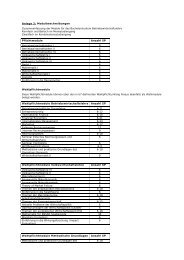
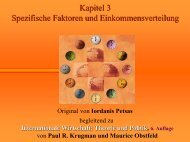
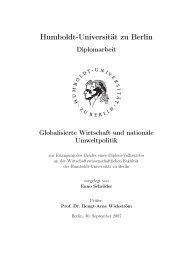
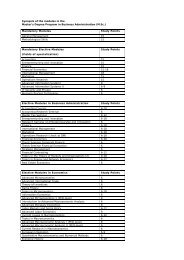
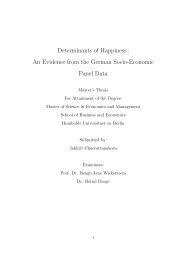
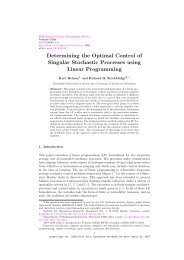
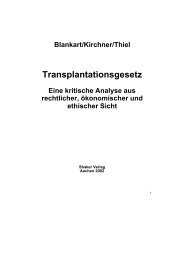
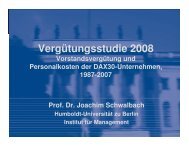

![[Text eingeben] [Text eingeben] Lebenslauf Anna-Maria Schneider](https://img.yumpu.com/16300391/1/184x260/text-eingeben-text-eingeben-lebenslauf-anna-maria-schneider.jpg?quality=85)

